Estimated reading time: 1 minute
In the year 2020, the eCommerce industry generated around 4.28 trillion US dollars in sales. Today we are going to discuss some eCommerce Marketing Strategy tips
That’s because pre-pandemic, selling online was a choice. But during and post-COVID, it became a necessity.
To be honest, the online market is not going to hold back in the future. It is estimated that by 2024, the e-commerce industry will generate 6.3 trillion US dollars in revenue.
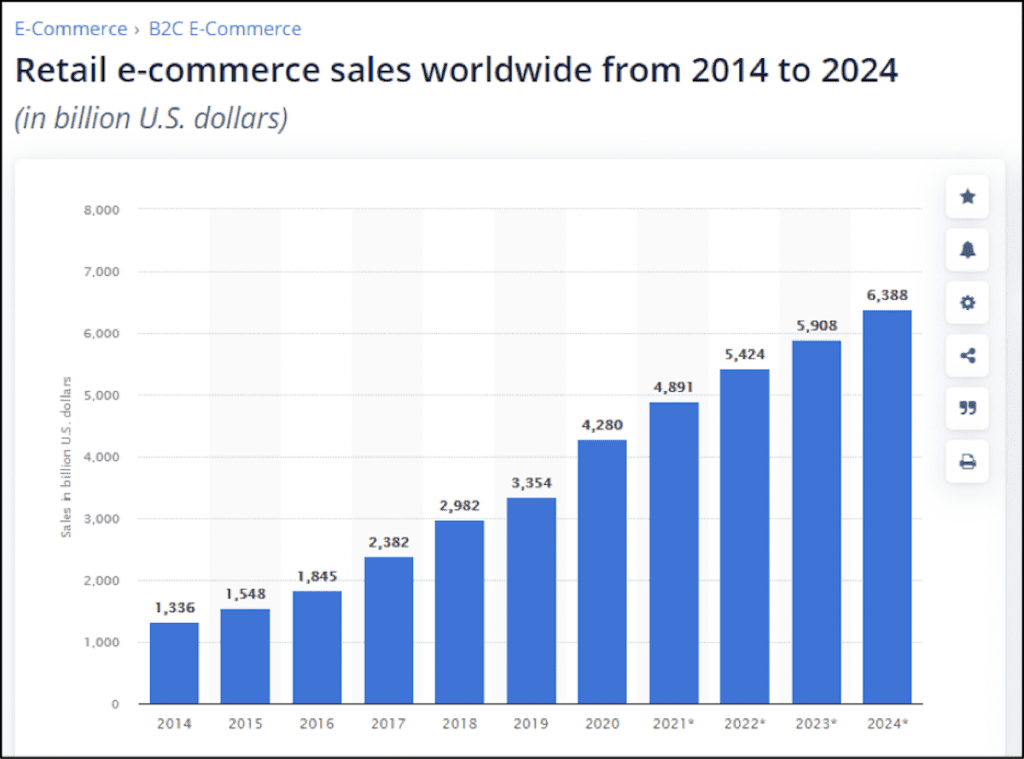
So you know what you are chasing: a result-oriented e-commerce marketing strategy for your business.,
Because no matter how amazing products and services you have ‒ if you are not able to present them online or even reach your potential customers ‒ it’s going to stay where it is.
In this article, we’ll be discussing how you can market your eCommerce business online and what strategies you should employ. Let’s get started.
10 Essential Ecommerce Marketing Tips
You don’t need to be an expert to market your products. With the help of a few tips and tools, you can do a good job.
Before I walk you through the article, here’s what you’ll take away from it:
- Tips to increase organic search rankings.
- Points to build brand awareness and credibility.
- Ways to manage marketing smartly.
- Ideas to earn customer loyalty.
1. Check Your Page Speed
Does a website’s page speed actually hurt its Google search rankings? How can it become a deciding factor for people to visit web pages?
Well, this might come as a surprise to you, but if your site takes more than 5 seconds to load, the conversion rate drops by 4.42% on average.
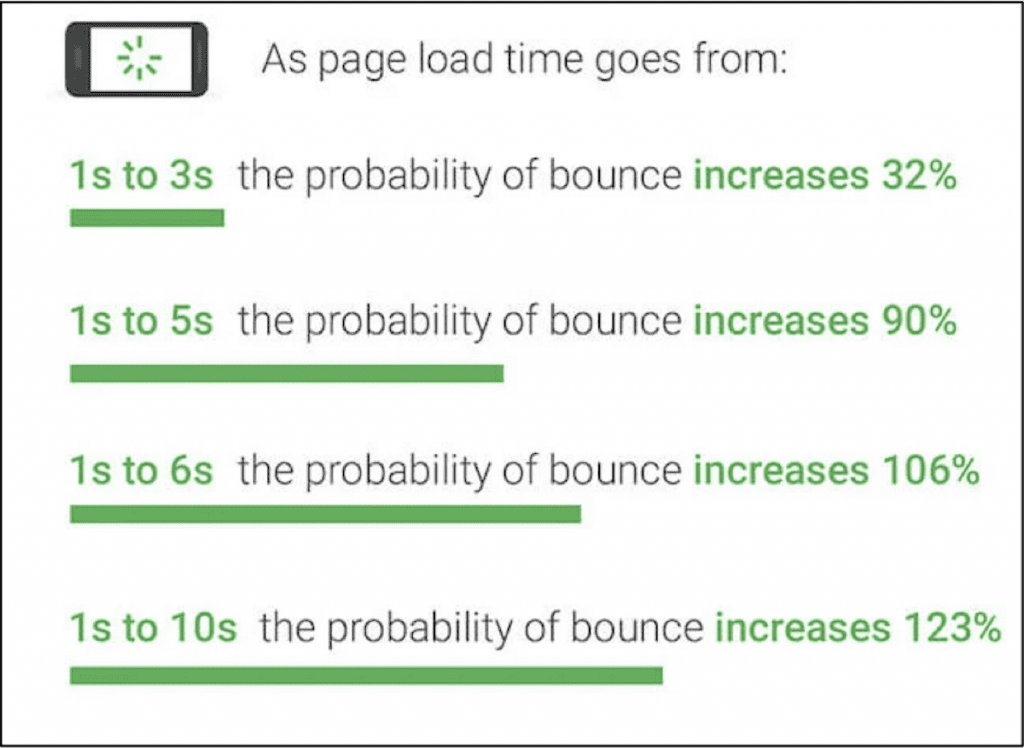
So, slow-loading websites are a big no for your eCommerce marketing strategy.
Using the Rankwatch Website Analyzer, a free tool that helps you get an overview of your SEO performance, you can easily check your page speed.
It will give you detailed statistics about your website’s page speed, which will be helpful when you are ready to optimize it.
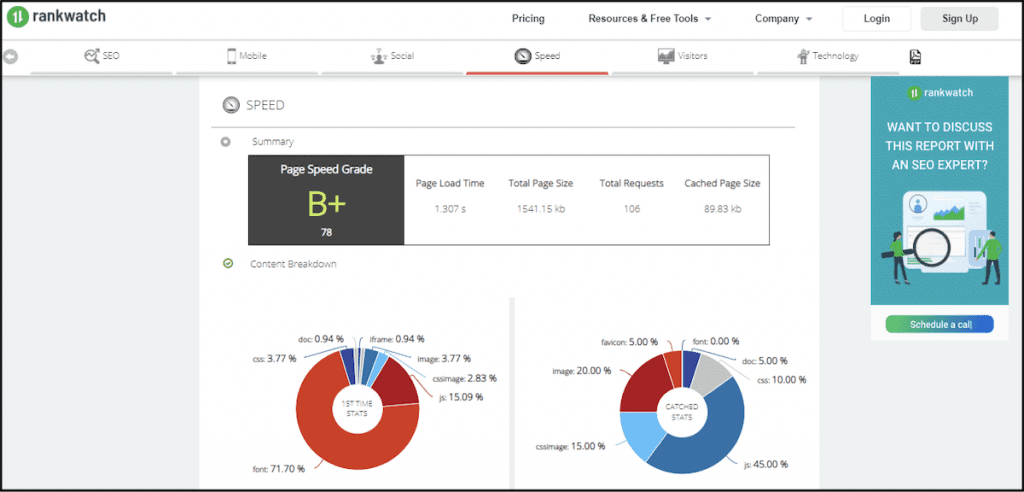
Here are some tips to increase your e-commerce site’s page loading speed:
- Compress images, videos, etc.
- Streamline your HTML and CSS code
- Delete unused images, videos, files, content
- Avoid using animations
- Implement lazy loading
- Leverage browser caching
- Don’t stuff third-party ads
With that, you’ll be able to run your e-commerce site smoothly.
But what would intrigue a user to click on a link in the search results?? It’s a well-advertised and optimized meta description.
2. Work On Your Site’s Meta Descriptions
Meta descriptions are the short descriptions that appear on the search results page below the titles. They act as mini advertisements for your e-commerce website and attract users.
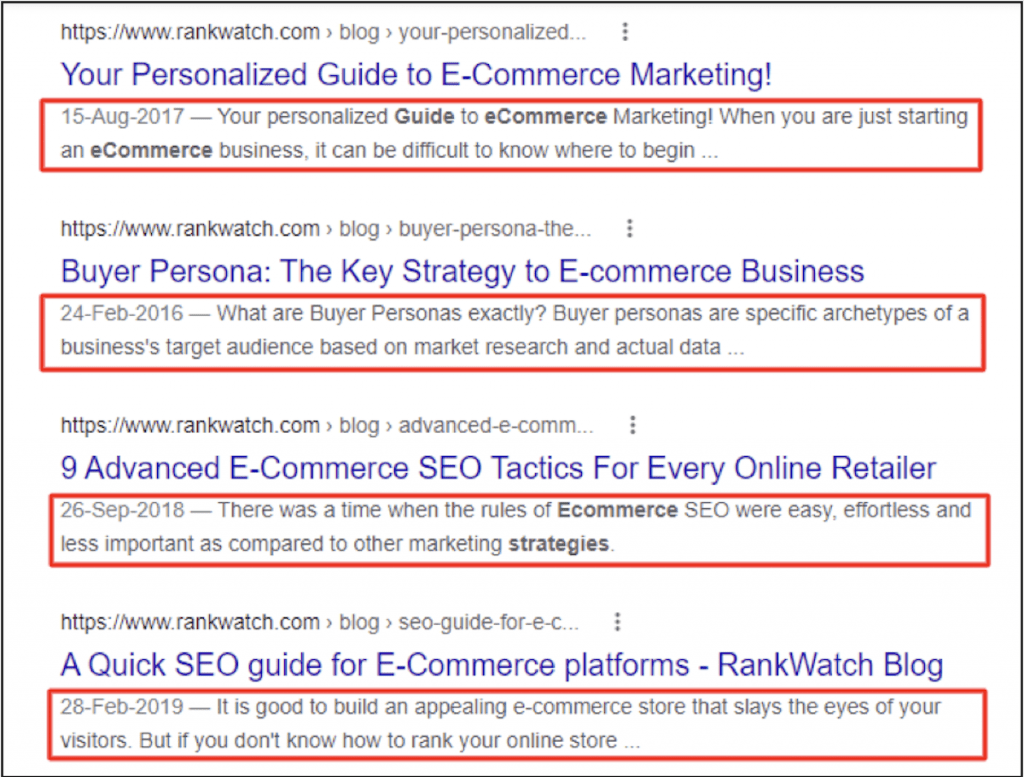
If you are overlooking them, you’re missing out on a lot of potential visitors. So, the next thing on your checklist should be optimizing your meta descriptions.
When you start doing so, keep the following things in mind:
- Include long-tail keywords.
- Don’t write more than 150-160 characters.
- Add a call-to-action.
- Avoid unnecessary symbols and punctuations.
It is possible to optimize your meta descriptions manually, but since e-commerce sites are huge, it can be very tedious and time-consuming.
Here are a couple of tools that will help you optimize your website’s meta description:
- Meta Tag Generator: This is a free online tool used to generate metatags.
- Meta Tag Analyzer: Meta tag analyzer checks your meta information and identifies errors if any.
This might seem complex at first, but slowly and steadily, you’ll get the hang of it.
That leads us to the third tip.
3. Focus On Image Optimization
Visitors lingering on your eCommerce site, contemplating whether to make a purchase or not, always look at the available images.
In fact, the more images, the more time they spend. But, if you use unoptimized images, it can severely impact your website’s performance and conversions.
So, you must optimize all your images beforehand. You can do so by:
- Choosing the right image format (Eg. JPEG, PNG).
- Choosing the right image dimensions (length and breadth).
- Going for lossless image compression.
- Giving appropriate names to images.
- Adding descriptive alt texts.
- Using image CDN (Content Delivery Network).
- Keep your thumbnails as small as possible.
- Use an image sitemap.
- Limiting the number of images per page.
If you are to do it by yourself, you can use an online tool like CompressJPEG or TinyPNG to make it a breeze.
When users start loving what they see, the next thing they do is check the reviews from previous buyers. So, it is essential to show reviews.
4. Include Customer Reviews
According to the stats, 91% of people read reviews, 84% trust them. So, it becomes a deciding factor to go ahead with the purchase from an e-commerce site.

Most people have a strict no-go policy with e-commerce sites that don’t show customer reviews. No matter how lucrative the offer may be, they won’t buy from it due to a lack of trust.
Hence, there are high chances that your e-commerce website might not do great at sales just because of reviews.
Besides helping you build trust and grow your sales, they also contribute to your SEO. So, you should try to show as many reviews as possible on your e-commerce site.
While it is justified to expect customers to drop reviews naturally, sometimes, it can take months for this to happen.
To collect reviews well in time, you can:
- Make submitting reviews easy and quick.
- Request your customers to leave reviews via email.
- Offer discounts and incentives in exchange for a review.
Once you have all sorted this, the next eCommerce marketing tip is to leverage the database of customers and prospects you have.
5. Build An Email Marketing Plan
43% of people in the US check their emails every few hours. And up to 60% of email opens happen on mobile devices. So, today emails are not just restricted to a mode of communication.
With personalization, targeting, and interactive content, emails have become a powerful marketing channel. And e-commerce sites can easily use them to scale and grow their business.
How? By building an email list and using it to market their products.
If you want to do so, you can easily collect emails from people by:
- Running a contest on social media.
- Directing people to sign up page from ads.
- Giving offers in exchange for their email.
- Using a newsletter pop-up on your website.
- Asking for their details at the time of checkout.
- Implementing a referral program.
When you have an email list, you can plan out sending personalized, purposeful, and targeted emails.
In the emails, you can:
- Promote your future launches.
- Showcase your best-selling items.
- Send appealing offers, promotions or discounts.
- Share relevant and helpful blog posts.
- Inform about policy changes and T&C updates.
- Ask for their feedback, etc.
Once you have streamlined your email marketing process, look at ways to use social media for your e-commerce business.
6. Invest In Social Media Marketing
As of 2021, there are 3.78 billion social media users worldwide. And this number is expected to grow to 4.41 billion by 2025.
That means a large number of your prospects and customers are present on these platforms.
Now there are two ways you can reach people:
- Organic: By the posts you publish on your handle.
- Sponsored: By the advertisements you run.
By choosing either of the ways, you can effectively market your offerings on social media.
Some ways to use social media for your e-commerce marketing strategy include:
- Promoting your e-commerce site.
- Showcasing your products.
- Sharing on-going offers and discounts.
- Running contests and giveaways.
- Selling directly on social media.
- Communicating with customers.
- Understanding your audience.
When you plan it well, you’ll be able to generate brand awareness, reach more and more people, and increase conversions.
After sorting this out, come back to your e-commerce site and check if you’re using keywords or not.
7. Use Keywords Everywhere
Well, keywords are very important if you want to grow your search rankings and organic traffic.
You must use them everywhere on your e-commerce site:
- Headings
- Page content
- Anchor text
- URLs
- Alt tags
- Meta tags, etc.
Now, how do you find the right keywords for your e-commerce site?
It’s by doing keyword research for every single web page:
- Analyze your web page’s content.
- Brainstorm the main topic.
- Prepare an initial keyword list.
- Use a keyword research tool to get suggestions.
- Select appropriate and relevant keywords.
But there are a few things you must keep in mind while making your choice:
- Think like a customer.
- Go for long-tail keywords.
- Ensure keyword intent is aligned with your goals.
- Prefer high search volume keywords.
With that, you are all set.
But remember, you cannot use the same keywords for every page. You need to research keywords for every web page and optimize it accordingly.
When you’ve done that, wait for the results. If they are not satisfactory, try changing the keywords, and it shall work!
8. Create Quality Content
Quality content is very helpful for acquiring new customers and convincing them to buy from your e-commerce site.
Since buyers can’t thump the products or services, smell them, feel them, taste them, use them or throw them while shopping online, they need persuasive and powerful content to make a decision.
Now, this content is not restricted to what you write on your specific product’s or service’s page. It can also be one of the following:
- Photos
- Videos
- Blogs
- Reviews
- Demos
- Support Materials, etc.
So, whatever format you choose to create content for your eCommerce site, make sure you don’t compromise on the quality.
Here are some tips for creating quality content:
- Step into your customer’s shoes.
- Keep a note of the readability.
- Align it with the search intent.
- Reflect expertise and authority.
- Make it relevant and up-to-date.
- Include a call to action.
- Optimize it for search engines.
With these, you can take your eCommerce strategy to the next level.
9. Make Your Site Mobile Friendly
As of January 2021, there were 4.66 billion active internet users worldwide. Of this total, 92.6 % (4.32 billion) accessed the internet via mobile devices.
That means the world is going mobile, and a vast majority of people are doing e-commerce shopping on their smartphones, tabs, etc.
So, your e-commerce site must be ready to serve them on smaller screen sizes and on the go.
If your e-commerce site is not mobile-friendly, you’re bound to see a decline in your site’s traffic and conversions, of course.
And it’s not a mistake, but a blunder anyone could make today.
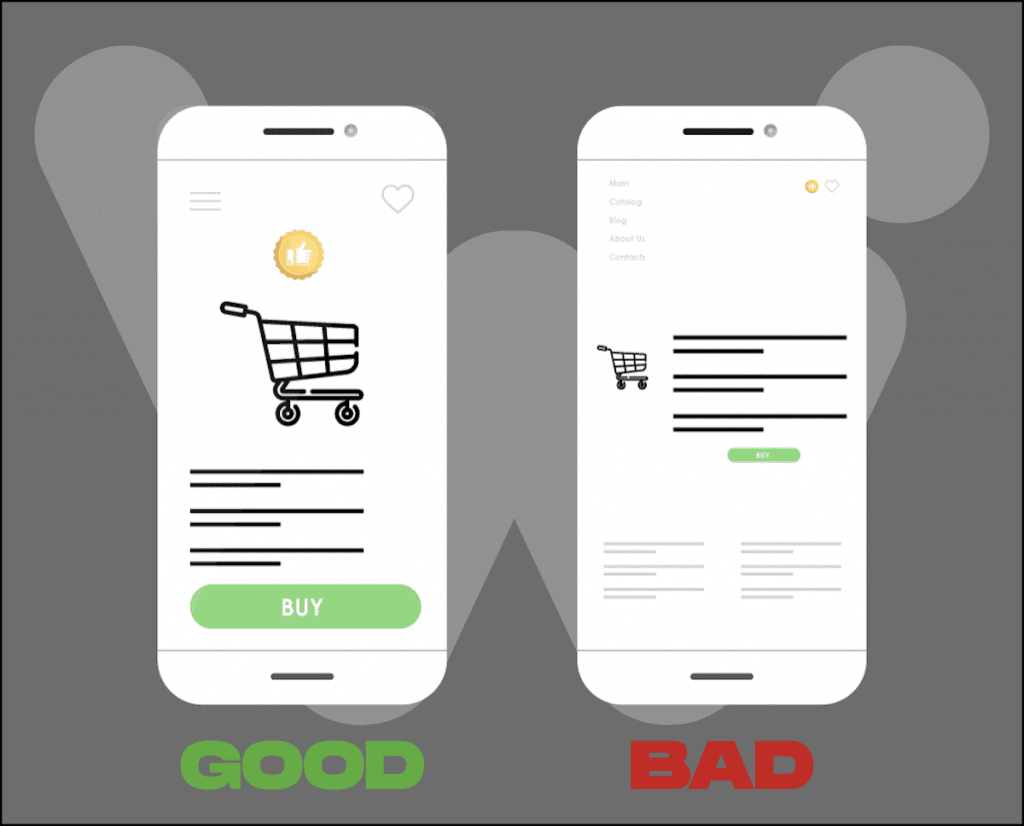
So, it is necessary to ensure that your e-commerce site is mobile-friendly. If it is not, here are a few things you can do:
- Use a responsive theme or design.
- Compress your images and CSS to the minimum.
- Avoid screen blocking pop up and ads.
- Break your content into small parts.
- Don’t use flash and animations.
- Use web fonts and readable font sizes.
- Change button size and placement.
- Add spaces between your links.
With that, you’ll be able to offer a great mobile experience to your visitors and convert them.
Now let’s wrap this burrito with the final ingredient.
10. Monitor Your Site’s SEO Performance
Like our smartphones, web pages also require updates; you cannot optimize it for once and be done with it.
So, you need to check your site’s SEO performance from time to time and optimize it by making the necessary improvements.
How do you do that? It’s with the help of a free website analyzer tool.
Enter the specific URL you want to check and get a quick yet comprehensive SEO report for it. Also, get to know the errors and fix them as soon as possible.

Once you’ve made the improvements, re-check the URL and assure that everything SEO is on-point.
If you miss it, it can seriously impact your SEO performance, organic traffic, and conversions.
So, don’t miss it.
Final Thoughts
E-commerce is going to live for generations. But, not being able to market your e-commerce site can be very expensive.
Work on increasing your organic search rankings, build brand awareness and credibility, earn customer loyalty, and conversions will follow.
Do you have any other questions related to e-commerce marketing? If yes, let me know about them in the comments below.
Contact Matchbox Design Group Today!
If your website could use a refresh, if you’re looking to drive more traffic to your site, or you would like to submit a guest post, fill out the form below and we’ll contact you to learn more about your digital needs.



